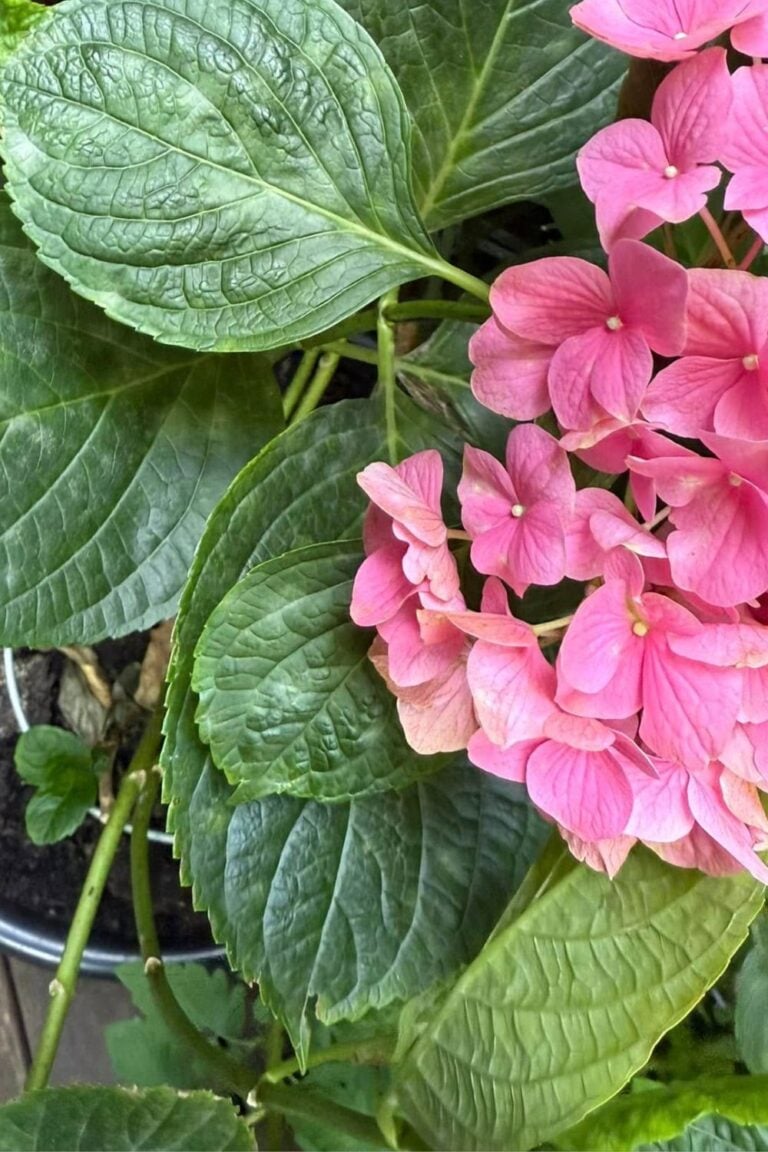Petunias are adorable annuals from the Solanaceae family, known for their trumpet-like flowers. They’re excellent at attracting bees for pollination and are often used as companion plants for strawberries and tomatoes.
In this article, I’ll introduce you to four diseases to watch out for when growing petunias and how to deal with them.

Contents
Diseases to Watch Out for in Petunia Cultivation
1- Powdery Mildew
Powdery mildew is caused by a fungus known as Sphaerotheca fuliginea. Once infected, you’ll notice white mold developing on the leaves, disrupting photosynthesis and hindering growth.
If left untreated, the mold spreads across the entire leaf, eventually turning it a reddish-brown color and leading to its death. Below is a photo of a pumpkin plant affected by powdery mildew.

Powdery mildew thrives in dry conditions. So, it’s essential to be especially cautious after the rainy season ends and just before harvest.
Since the pathogen spreads through the air, it’s crucial to prevent overcrowding by adequately spacing out your plants and managing their growth.
Prevention and Remedies
If you find any plants affected by powdery mildew, promptly remove them and either burn or bury them away from your garden.
The fungus lingers in the soil, so make sure to thoroughly disinfect any soil where the disease has been spotted. It’s also important to maintain good airflow by avoiding overcrowding your plants.
2- Gray Mold
Gray mold is caused by Botrytis fungus, a filamentous fungus that spreads through the air. The disease often manifests on leaves and stems, especially on dead leaf tips, which serve as a primary source of infection.
If a diseased leaf falls and touches another leaf, the disease will spread. As the disease progresses, the affected areas will be covered in gray mold.
Gray mold is less common in the summer but thrives in cool, high-humidity environments with limited sunlight, especially from fall to winter. Below is a photo showing a rose affected by gray mold.
How to Deal With It
If leaves are too dense or if the area where the plants are growing has poor ventilation, humidity can build up, making it easier for spores to spread. Aim to grow your plants in a well-ventilated area. If your plants have grown too bushy, trim the leaves as necessary to prevent overcrowding.
3- Mosaic Disease
Mosaic disease is caused by a virus that is often transmitted by aphids. The disease manifests as white to light brown mosaic patterns on leaves, distorting the unaffected green parts.
Not only is mosaic disease spread by aphids, but it’s also known to spread through the sap secreted by infected stems and leaves.
This disease can infect a wide range of vegetables and fruits beyond petunias, so be cautious of cross-infection from other plants.
Prevention and Remedies
During the seedling stage and times when aphids are prevalent, keep a close eye on your plants. Make sure to protect your seedlings from these pests.
If you find any diseased leaves, remove them immediately. Also, don’t touch other plants until you’ve thoroughly disinfected your hands after handling an affected plant.
4- Damping Off Disease/Seedling Damping Off Disease
Wilt diseases are caused by filamentous fungi like Fusarium, Rhizoctonia, and Phytophthora. These fungi infect the roots, causing decay and hindering nutrient absorption, thus stunting growth.
If you notice your leaves turning yellow from the bottom or your plants wilting, be alert. Left untreated, the roots will turn brown and the plant will die while still standing.
These fungi thrive in moist conditions. Poor drainage or prolonged rainfall can exacerbate the problem.
Even after removing the infected plant, spores may remain in the soil, and plant debris may carry fungal strands, causing reinfections. If your seedlings get infected with wilt, it’s referred to as seedling wilt.
How to Deal With It
Remove any affected plants right away and handle them outside your garden to prevent further spread.
Pay attention to fertilization so you don’t run out of nutrients. Because these fungi prefer wet conditions, ensure your soil has good drainage.
As a preventive measure, avoid planting the same crop in the same spot for consecutive seasons. Applying fungicides to the soil before planting can also be effective.
Keeping Petunias Healthy
Good ventilation, attentive fertilization, and careful watering are key to raising healthy petunias.
If your plants do get infected with a disease, act according to the symptoms—whether it’s removing leaves or pulling out the entire plant.
Check out my other article to keep your petunias free from pests ensuring they grow strong and healthy.






